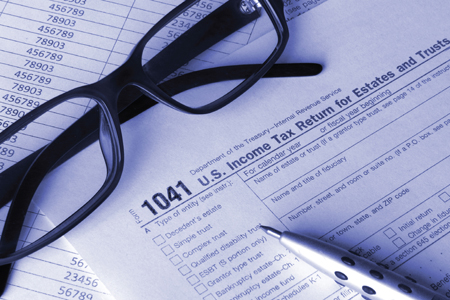Keep More of What You Earn
These 5 tax tips may help upper-income individuals save.

You’ve achieved a high level of income—and you have the hefty state and federal tax bills to prove it. Yet smart planning can help you minimize your tax burden in a way that saves dollars and makes sense. Ask your financial adviser if these five ideas offer opportunities for you:
1. Save on the Additional Medicare Tax. Last November 26, the Internal Revenue Service (IRS) issued regulations implementing its Additional Medicare Tax as part of President Obama’s Affordable Care Act. At a rate of 0.9 percent, this tax applies to wages over certain thresholds. Married couples who file a joint tax return and together make more than $250,000 are subject to the tax—but for them there is an escape clause. “The surtax is based on their adjusted gross income (AG I), or income minus any nontaxable deductions such as health insurance and 401(k) retirement savings plans,” says Linda Robertson, a senior planner with Financial Finesse, a national company that provides financial education to employers. “Thus, contributing enough of your salary to a 401(k), a flexible spending account or a health savings account can help avoid that surtax if the couple can get their AG I below $250,000.” (Single taxpayers earning more than $200,000 must also pay the new tax, but for them it is calculated and withheld automatically by their employer based on unadjusted gross income, so this strategy isn’t available to them, says Robertson.)
2. Save on the Net Investment Income Tax (NIIT). Also to help finance the Affordable Care Act, as of January 1, 2013, the U.S. Treasury introduced a 3.8 percent tax on net investment income, meaning taxable income received from assets such as bonds, stocks, mutual funds or other investments. You’ll owe this tax if your net investment income exceeds $250,000 for married couples filing jointly or $200,000 for singles, and the percentage applies to the lesser of either (1) the amount of investment income or (2) the excess of AG I over these thresholds. How to save? “Offset investment income with investment losses by selling investments whose value has declined if they no longer meet your portfolio goals,” says Robertson. But this may not be sufficient reason to dump a stock, bond or fund if, despite recent losses, you’re still bullish about its long-term future.
3. Reconsider rental real estate. “Owning rental real estate is often touted as a great tax shelter,” says Robertson. That’s because it’s well known that the IRS permits taxpayers to claim an annual depreciation allowance on rental real estate properties—even though they generally rise in value, unlike a car or a computer that wears out over time. But beware: Once you make more than $150,000 a year, you’re no longer eligible to take rental real estate losses against other earned income. This isn’t new, but Robertson says many high income earners have moved upward into this bracket without realizing that it brings new rules, while others “don’t necessarily ask their CPA for advice when they jump into rental real estate.” So think before you buy.
4. Invest in retirement plans wisely. Contributions made to retirement plans can be deducted from your reported income, so contribute as much as you can to your 401(k) or Roth IRA (Individual Retirement Account). How to choose between these plans? It boils down to income. With a traditional 401(k), you contribute pre-tax income, then pay taxes on the funds when they’re withdrawn during retirement. A Roth IRA , on the other hand, allows you to pay taxes up front and enjoy tax-free withdrawals in retirement. If you’re young this may sound tempting, as your contributions will have decades to grow taxfree. “But for a high-income earner, even a young one, a 401(k) is usually a better option because the tax hit you’d take now would otherwise be too high,” says Robertson.
5. Consider a “back-door” Roth IRA . The law says your income can’t exceed certain fairly moderate limits in order for you to be eligible to open a Roth IRA —for 2013, income had to be less than $127,000 for single folk or $188,000 for married couples filing jointly. “Yet if you make more than these amounts, simply open a traditional IRA account, then immediately convert it to a Roth IRA , because there are no income limits on conversions,” says Robertson. This back-door approach means that high earners can join in benefiting— legally—from tax-free earnings.
— FRANCESCA MOISIN

